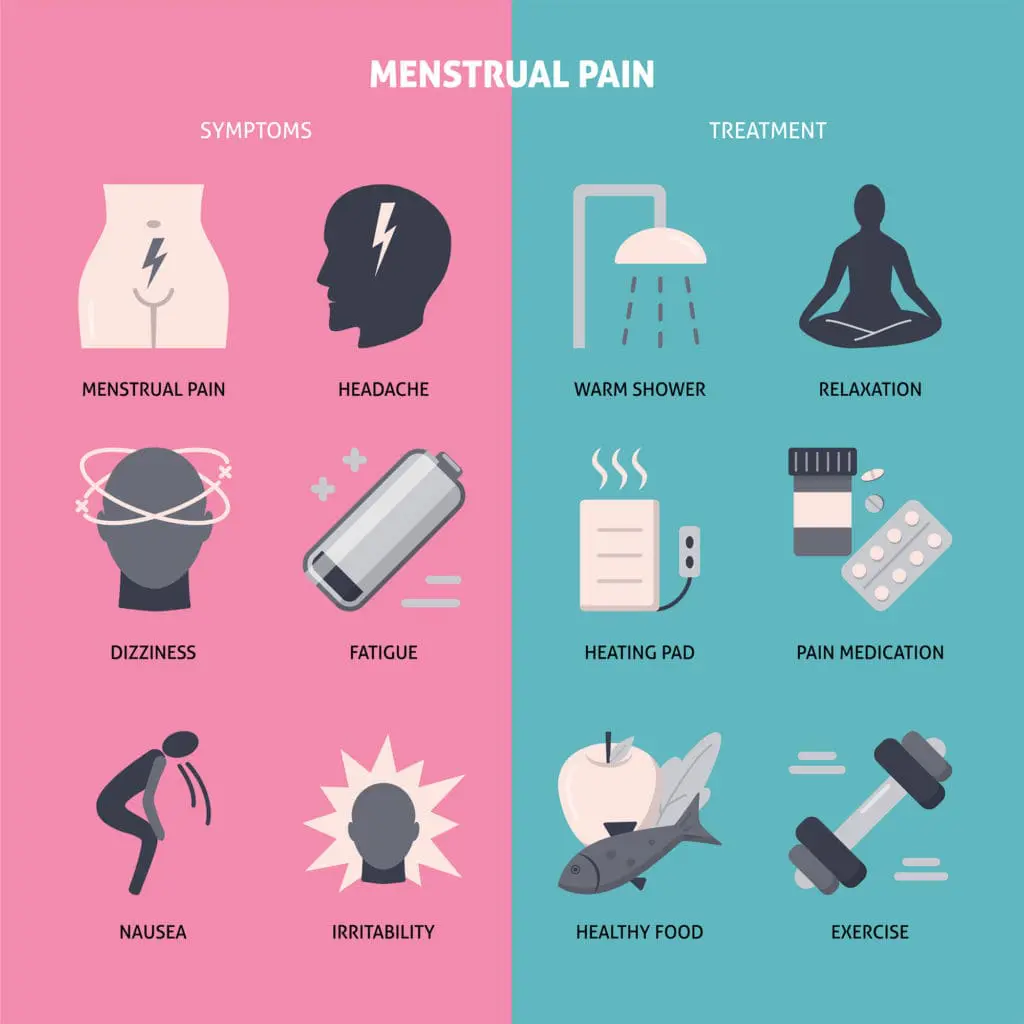While pain and discomfort related to periods can range from mild to severe, it’s important to understand when that pain is more than just a “normal” monthly occurrence, and when you should see a doctor about painful periods.
Painful Periods: Understanding Dysmenorrhea
 Menstruation is a monthly occurrence in which the uterus sheds its lining, a result of the body’s preparation for pregnancy, which when not pregnant results in normal vaginal bleeding. Menstrual pain is also known as dysmenorrhea (di·smeh·nuh·ree·uh), and affects more than half of menstruating women, according to the American College of Obstetricians and Gynecologists.
Menstruation is a monthly occurrence in which the uterus sheds its lining, a result of the body’s preparation for pregnancy, which when not pregnant results in normal vaginal bleeding. Menstrual pain is also known as dysmenorrhea (di·smeh·nuh·ree·uh), and affects more than half of menstruating women, according to the American College of Obstetricians and Gynecologists.
Pain associated with the menstrual cycle is common, however severe pain and cramping are not. While most women who suffer from painful periods will typically have mild pain for one to two days, some women have severe pain that can keep them from doing their regular activities for weeks to months at a time.
There are two main types of dysmenorrhea: primary and secondary. Primary dysmenorrhea occurs in the absence of any visible symptoms, or with no apparent cause associated with it. It will typically occur in women who have just begun menstruation, known as menarche, which will generally happen around ages 11-14. People who suffer from primary dysmenorrhea will most often experience pain before and during the menstrual cycle, with symptoms subsiding with the end of the cycle.
Secondary dysmenorrhea occurs as a result of a secondary cause such as endometriosis (the most common cause of secondary dysmenorrhea) or adenomyosis, and will typically occur in women who have previously not had painful periods but experience more pain associated with their menstrual cycle as they age. This type of dysmenorrhea is more common in women between the ages of 30-45.
Causes of Dysmenorrhea
The causes of dysmenorrhea, for many women, can remain unknown. Unfortunately, some women have a higher predisposition for painful menstrual cycles, however, more severe cases of dysmenorrhea—both primary and secondary—can result in other symptoms such as diarrhea, nausea, vomiting, headache, and dizziness. While there are no exact risk factors associated with dysmenorrhea, some factors that are thought to contribute to more painful periods are listed below.
- Women under the age of 20
- Heavy menstrual flow
- Smoking
- Family history of painful periods or conditions that can cause secondary dysmenorrhea
- Depression
- Irregular periods
- Attempts at losing weight
Causes of Secondary Dysmenorrhea
Secondary dysmenorrhea can typically be easier to diagnose, as the pain associated with it will usually persist for much longer than the menstrual cycle, and is typically caused by some type of disorder within the reproductive organs. These secondary conditions, while possibly difficult to diagnose such as endometriosis, can help identify the root cause of a painful period, and can include, but is not limited to, any of the following conditions.
- Endometriosis—The most common cause of secondary dysmenorrhea. Endometriosis is a condition in which endometrial tissue, the tissue that lines the inside of the uterus, grows outside of the uterus, typically in the abdominal cavity. The endometrial tissue that causes endometriosis sheds just as it would inside of the uterus, causing internal bleeding and severe pelvic pain. Endometriosis typically will manifest as severe pelvic pain that worsens during the menstrual cycle, and can often result in painful sex.
- Fibroids—Uterine Fibroids are non-cancer causing growths that form on the outside of the uterus. Also referred to as myomas, these growths can cause severe pain in the pelvic area, and may result in frequent urination. Uterine fibroids can also cause symptoms such as constipation, leg or back pain, and difficulty emptying the bladder; which can help distinguish the condition from painful periods.
- Adenomyosis—Adenomyosis is a condition in which the endometrial tissue that lines the uterus starts to grow into the muscular wall of the uterus. Unlike endometriosis, adenomyosis is contained within the uterus, growing into the muscle and thickening the uterus. Like endometriosis, there is no known cause of endometriosis, however, it is more common in women between the ages of 40-50.
Other Potential Causes of Secondary Dysmenorrhea
- Uterine problems or issues with the fallopian tubes or other reproductive organs
- Birth defects that affect the reproductive system
- Crohn’s disease
- Urinary disorders such as urinary tract infection
When to See a Doctor for Painful Periods


If home remedies or over-the-counter medications prove to be effective at alleviating menstrual cycle pain, there may be an underlying issue that can be causing your symptoms. It’s always important to have a good, healthy line of communication with your general practitioner and gynecologist. Take note of any abnormal symptoms, and talk with a doctor if menstrual pain becomes severe.
What Questions Do You Have About Painful Periods?
Tell us in the comments section below!
What topics should we cover next?
Email us at info@painresource.com with your ideas.
Are you on Facebook?





